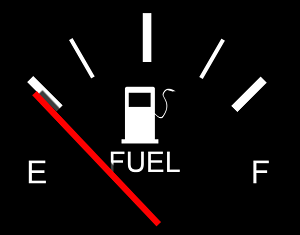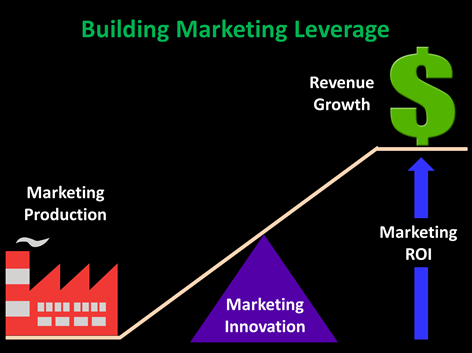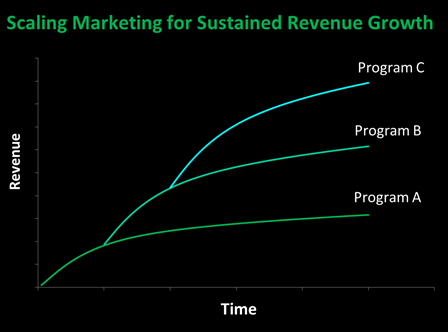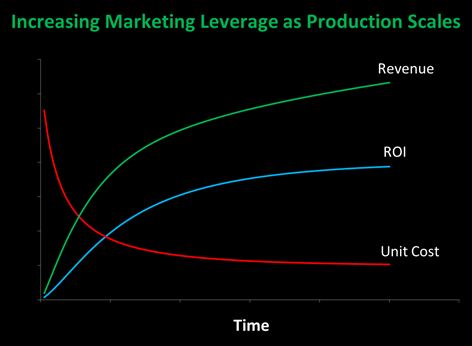Is Your Marketing Management Process Out of Gas?
 Marketing managers come in many varieties and they employ an even broader variety of marketing programs. In the end, however, all marketing managers are tasked with the same goal: revenue growth. There are countless great marketing blogs, e-books and indeed textbooks on tools and techniques to drive revenue growth: once. Unfortunately, you don’t create sustainable revenue growth by stringing together a hodge-podge of marketing programs. Sustainable revenue growth requires a marketing management process that consistently discovers, optimizes and scales new sources of revenue. Is your marketing management process fueling sustainable revenue growth, or is it running out of gas?
Marketing managers come in many varieties and they employ an even broader variety of marketing programs. In the end, however, all marketing managers are tasked with the same goal: revenue growth. There are countless great marketing blogs, e-books and indeed textbooks on tools and techniques to drive revenue growth: once. Unfortunately, you don’t create sustainable revenue growth by stringing together a hodge-podge of marketing programs. Sustainable revenue growth requires a marketing management process that consistently discovers, optimizes and scales new sources of revenue. Is your marketing management process fueling sustainable revenue growth, or is it running out of gas?
This is the second post in a Markodojo marketing management blog series on marketing process management. The first post in the series provided a definition of the marketing management process as a set of ongoing activities that source, implement and monitor improvements to the marketing mix with the goal of increasing revenue by delivering more customer value. This second post introduces the idea of marketing leverage: increasing revenue and marketing ROI simultaneously, and makes case that marketing leverage is the key to driving sustainable revenue growth as a business scales.
Marketing Leverage:
The Marketing Manager’s Endless Quest
In order to make money, you have to spend money—an inconvenient truth that most marketing articles tend to overlook. While the main goal of marketing is revenue growth; the sister goal of your marketing management process is marketing ROI. Good marketers produce marketing campaigns that grow revenue. Great marketing managers create a marketing management process that endlessly seeks to increase marketing leverage by driving sustainable revenue growth at the highest possible marketing ROI.
Marketing leverage requires marketing innovation to discover and improve marketing programs
and high marketing production efficiency to increase revenue and marketing ROI simultaneously.
To better understand the importance of marketing leverage; let’s contrast the role of marketing to the role of sales in growing revenue. Sales consists of direct, human, one-to-one customer interactions. Marketing consists of indirect, automated, one-to-many customer interactions. Assuming that your customers aren’t completely averse to talking to a qualified salesperson, then sales will always deliver a more personal, more adaptable, more complete and lower risk customer experience than marketing. In fact, marketing managers expend enormous effort to target, brand, and personalize marketing communications to recover these characteristics. There is really only one reason to rely on marketing over sales: it’s cheaper. That’s marketing leverage.
Consistently increasing marketing leverage over time requires a balance of ongoing innovation and increasing production efficiency in your marketing management process. The innovative side of your marketing management process must constantly experiment with new ideas for improving the marketing mix, such as a new media channel, an add-on product, a better message, or an improved offer. Once a new marketing program is proven successful, the production side of your marketing management process must expand capacity to increase revenue, while simultaneously increasing marketing ROI through reduced unit costs, e.g., cost per transaction, cost per lead, cost per visitor, and so forth.
Sustainable revenue growth requires a marketing management process
that consistently discovers, optimizes and scales new sources of revenue.
The result is a punctuated revenue growth curve where each new successful marketing program brings a new stream of revenue. Revenue grows as the new marketing program is optimized and scaled through ongoing innovation and increased production efficiency. Or more simply, continuous improvement on both the revenue and costs sides of the marketing ROI equation. Over time, each marketing program reaches its limit and another new marketing program that taps into a new source of revenue must be added to sustain growth.
The Marketing Innovation Engine
Marketing managers must innovate if they expect to make progress in the endless quest for marketing leverage. New marketing ideas, both big and small, must be sourced, brainstormed, prioritized, tested, measured and assessed. New ideas that consistently succeed become ongoing marketing programs. Innovation then shifts to marketing program optimization. After a few experiments, we know that email marketing works for our business, but what are the best messages, the best offers, the best times of day to send, the best open rates and the best click through rates? If your marketing management process does not encourage innovation, the ROI of your current marketing will quickly level off and you will not discover the new marketing programs you need to take your business to the next level.
Your marketing management process should create a marketing innovation engine
that constantly discovers new marketing programs and optimizes existing marketing programs.
Suppose you are just getting started with marketing. What do you do? Your choices of marketing programs are vast, including everything from billboards to product trials to social media. The smart marketing manager will make some educated guesses based on what works for similar customers in similar markets and then place some carefully considered bets, but you will never know what works until you actually try it. If something doesn’t work, then you need to move on to something else quickly, unless of course you’ve blown your entire marketing budget on failed programs. In that case, might just need to move on.
Marketing innovation doesn’t happen by accident. Marketing managers make it happen by constantly testing new marketing programs and improvements to existing marketing programs. Some marketing managers do this as a matter of personal style. However, sustainable revenue growth cannot rest entirely on the shoulders of a few creative marketing managers. It simply will not scale. Relentless innovation must be baked into your marketing culture, marketing management process, and marketing systems. The most successful marketing managers build marketing innovation engines that consistently fuel future revenue growth.
Scaling Marketing Production
The most straightforward way to grow revenue in any business is to sell every deal directly: prospecting, qualifying, educating and finally closing. Some businesses operate almost exclusively this fashion, because their products and services require privacy, risk, personal relationships and significant investment, such as high-net worth money management and strategic military weapons. Unfortunately, direct selling has no leverage and simply doesn’t scale for things like chewing gum, smart phones, automobiles and office equipment. Without marketing leverage, these lower priced products would never make it to market.
It is very easy to waste a lot of money on marketing. First of all, every marketing program has a natural limit—a point where spending more money on the marketing program does not result in a commensurate increase in revenue. Second, every dollar spent on marketing and sales ultimately ends up in the price of your product, reducing your competitiveness. It’s not like you can sell chewing gum at $100 a pack. In any event, there is always a limit to your marketing budget.
Your marketing management process should increase marketing ROI as production scales
by lowering marketing unit costs, such as cost per transaction, cost per lead, etc.
Because of these constraints, marketing managers cannot focus exclusively on revenue growth. They must grow revenue while simultaneously increasing marketing ROI. Moreover, marketing must reduce total sales and marketing costs, not just marketing costs. If marketing cost savings simply shift the expense to sales, then they are actually reducing marketing leverage. Marketing ROI must come from real improvements in marketing production efficiency derived from increased standardization, automation and quality. Improving marketing ROI requires expertise in an area most marketing managers overlook: process management.
Marketing management is process management, not project management. Increasing marketing leverage requires a marketing management process that fosters ongoing marketing innovation while simultaneously increasing marketing production efficiency. Your current marketing projects may grow revenue today, but they will not create the marketing innovation engine and scalable production capacity required to fuel sustainable revenue growth. This will only be accomplished by building a marketing organization and designing a marketing management process that endlessly seeks to increase marketing leverage.
Joel York
Latest posts by Joel York (see all)
- Marketing Management Tactics for Quelling Public Unrest - October 11, 2016
- Avoiding Marketing Management Industrial Accidents - September 20, 2016
- Surviving Marketing Management Natural Disasters - September 13, 2016




